
In 2025, the global touchscreen landscape is undergoing a profound transformation, with a series of new features emerging that will change the way we live and work. What exactly are these new features, and what do they mean for us?
Traditional multi-touch technology gets a further upgrade in 2025. Today's touchscreens are capable of recognizing more complex combinations of gestures, such as in drawing apps, where users can zoom, rotate, and draw details with multiple fingers at the same time, just as naturally and smoothly as if they were working on a real canvas. On some high-end tablets, users can quickly switch between apps with three fingers, or use four fingers to invoke system shortcut menus. This evolution has greatly improved operational efficiency, especially for those who need to multitask frequently, whether it is a designer who can quickly adjust a design plan or a business person who can switch between different office software.

The pressure-sensitive feature became a highlight of this year's touchscreen. In the case of the latest smartphones, the screen is able to sense the force of the user's touch. When the user gently taps the screen, a preview operation may be performed, such as gently pressing the image to view a large image preview; When you press hard, the image will be opened directly for editing. For example, in racing games, the force of pressing the screen can control the acceleration of the car, making the player feel as if they are really stepping on the accelerator, which greatly enhances the immersion of the game and the accuracy of the operation. This function allows the interaction of the touch screen to no longer be limited to the recognition of position, but goes deep into the force dimension, bringing users a richer and more personalized operation mode.
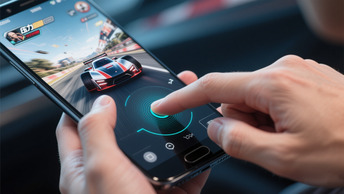
The patent for "a touch screen that automatically adjusts the light intensity" represents an important breakthrough in this field. The touchscreen uses a built-in light sensor to sense the intensity of external light in real time. When the user walks from indoors to outdoor bright light environment, the screen will automatically increase its brightness to ensure that the content is clearly visible; When entering a low-light room, the brightness of the screen will automatically decrease to avoid irritating the eyes with an excessively bright screen. This automatic adjustment function not only improves the user's viewing experience in different environments, but also effectively saves power, extends the battery life of the device, and brings users a more comfortable and convenient use experience.
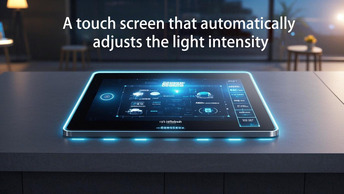
In 2025, high-resolution touchscreens with high refresh rates will become more common. Many high-end monitors and mobile phone screens have reached 4K or even higher resolutions, with extremely high pixel densities and extremely clear and sharp images and text. At the same time, high refresh rate screens (such as 120Hz, 144Hz or even higher) make screen switching and dynamic display smoother. When watching the video, the characters' movements are smoother, without stuttering and dragging; When gaming, the high refresh rate screen allows players to capture details in the frame faster, making the game more responsive and delivering a more immersive visual experience, as if they were in the real game world.
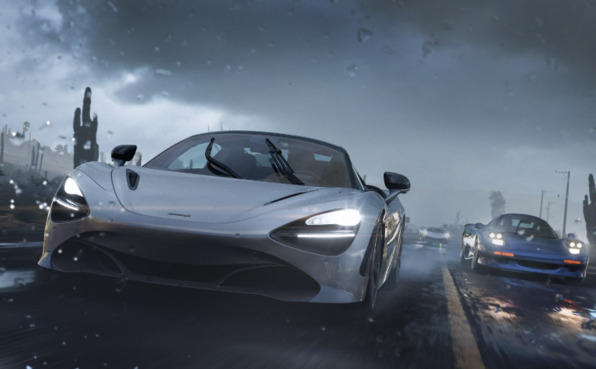
With the development of Internet of Things technology, the integration of touch screen and Internet of Things is getting closer and closer. Today's touchscreen devices can easily connect to a variety of smart devices in the home, such as smart lights, smart door locks, smart home appliances, and more. On the touch screen of the smart home control center, users can remotely control the devices in their home through simple touch operations. On the way to work, you can turn on the air conditioner at home in advance through the touch screen of your mobile phone to adjust the appropriate temperature; When you get home, use the touch screen to control the smart door lock to open the door and turn on the lights at the same time. In the industrial field, the touch screen has also become an important interface for connecting production equipment and monitoring the production process, and the staff can monitor the operation status of the equipment and adjust the production parameters in real time through the touch screen, which greatly improves the production efficiency and the convenience of management.
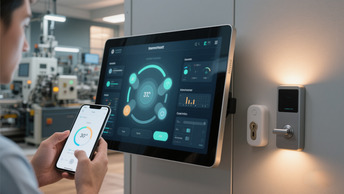
As a new touch technology, nano-sensing touch film will also have a wider application in 2025. With a thickness of only about 0.2mm and a light transmittance of about 93%, this touch film has high positioning accuracy and fast response. It can be attached to any medium, such as clear glass, liquid crystal display devices, etc. In some high-end commercial display scenarios, merchants paste nano-sensing touch film on glass windows, combined with projectors and PCs, to realize the function of large-size touch screens. Customers can touch the glass window to view the product details and have an interactive experience, which attracts more customers' attention and enhances the brand image and product promotion effect. In the field of education, nano-sensing touch film is also used in interactive teaching equipment, providing students with a more flexible and convenient way to learn and interact.
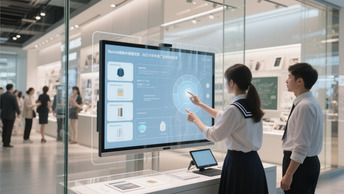
These new features of the global touchscreen in 2025 will change the way we interact with devices in many ways, improving the visual experience and expanding the field of applications, bringing more convenience and fun to our lives and work than ever before. With the continuous development of technology, I believe that the touch screen will continue to evolve and bring us more surprises.
Name: lily
Mobile:8613684959210
Tel:0755-27325331
Whatsapp:8618573329919
Email:sales12@huayuan-lcd.com
Add:Factory No.9, Zhongnan High-tech Intelligent Manufacturing Industrial Park, Tianyuan District, Zhuzhou,Hunan, China, 412000